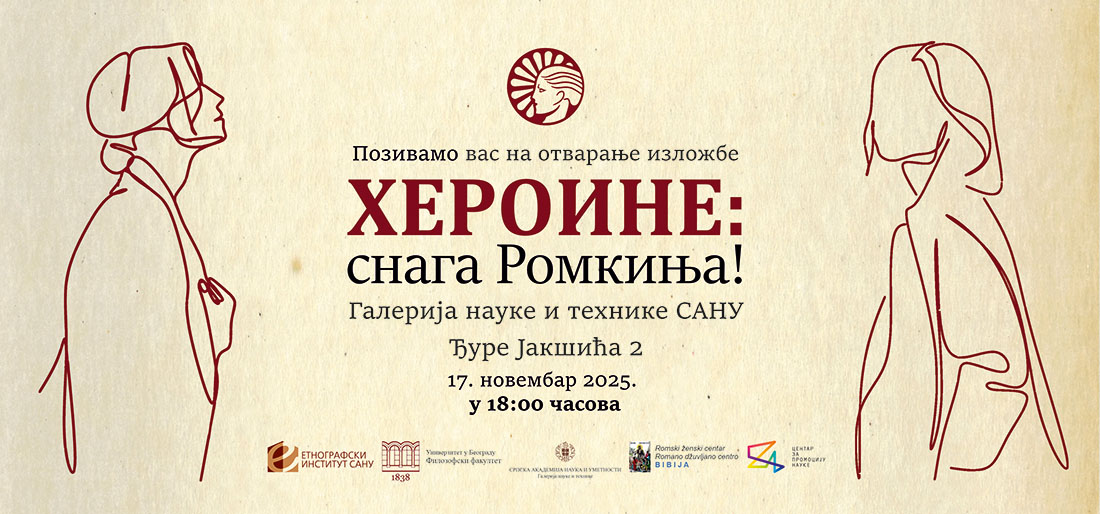Exhibition on HEROINES – THE POWER OF ROMA WOMEN at the SASA Gallery of Science and Technology
The exhibition ‘Heroines: The Power of Roma Women’ was opened on Monday, 17 November, at the SASA Gallery of Science and Technology. The exhibition was conceived by the team working on the project ‘Heroines: Empowering Roma Women through Networks of Solidarity’, and it is organised by the Institute of Ethnography SASA, the Faculty of Philosophy, University of Belgrade, Roma Women’s Centre Bibija, and the SASA Gallery of Science and Technology.
The exhibition ‘Heroines: The Power of Roma Women’ is one of the outcomes of the project ‘Heroines: Empowering Roma Women through Networks of Solidarity’ implemented by the Institute of Ethnography SASA, Roma Women’s Centre Bibija and the Faculty of Philosophy, University of Belgrade, under the auspices of the Centre for the Promotion of Science of the Republic of Serbia within the public call for the citizen science research support.
The exhibition emerged from a desire to recognise, preserve and present the living heritage of female struggle and solidarity in Roma communities in Serbia. Roma women participated in every phase of the exhibition’s design, which is methodologically based on community mapping. Their life stories, experiences and everyday survival strategies have been transformed into maps, objects and narratives within the exhibition, testifying to the resilience, creativity and strength of women, who, despite various forms of exclusion, build support groups and foster a sense of togetherness.
The central part of the exhibition concept is taken up by ’Memory Archives’, which showcases the process of emancipation of Roma women through a spectrum of emotions fuelling it. Fear, anger, courage, sadness, joy and love are represented as emotions shaping their everyday life, connecting personal and shared experience and becoming change instigators. The Archives do not record the past but rather living experience, emotions behind decisions, and choices which give strength to overcome obstacles. As such, they represent just one of the possible insights into a complex and multilayered process of Roma women’s empowerment, making way for other types of interpretations and new perspectives.

